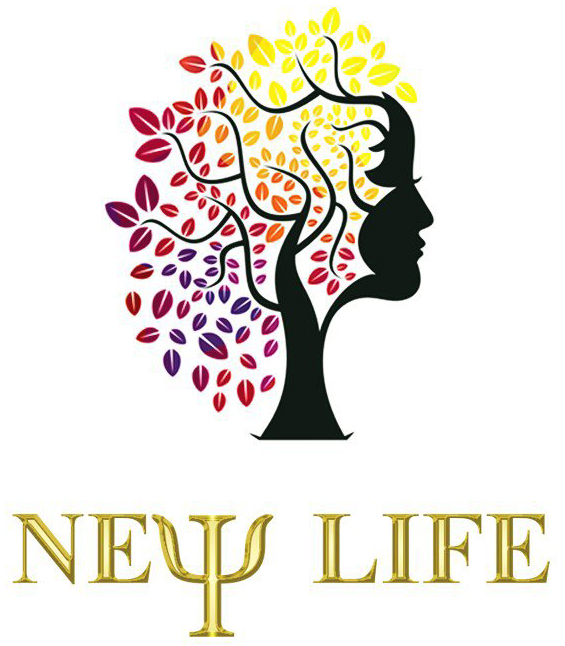1. Introduction: The Power of Symbols in Human Culture
Symbols are fundamental to human societies, serving as visual or conceptual representations that embody shared values, beliefs, and identities. From ancient cave paintings to contemporary logos, symbols facilitate communication across generations, often carrying layers of meaning that transcend language.
Historically, mythological imagery has played a significant role in shaping modern perceptions. These images, rooted in stories passed down through centuries, influence everything from art and fashion to branding and security. One such powerful mythological symbol is Medusa, whose image has evolved from ancient legend to a modern icon of protection, power, and transformation.
Table of Contents
- The Origins of Medusa in Greek Mythology
- The Evolution of Medusa’s Image into Modern Design
- Medusa as a Symbol in Modern Art and Fashion
- Medusa and Protection: From Ancient Shields to Modern Icons
- The Influence of Mythological Elements on Modern Symbols
- Case Study: The “Eye of Medusa” in Modern Products
- Non-Obvious Connections: Mythology and Modern Consumer Culture
- Deeper Interpretations: Medusa as a Symbol of Transformation and Empowerment
- Conclusion: The Enduring Legacy of Medusa in Modern Design
2. The Origins of Medusa in Greek Mythology
a. The myth of Medusa: story and symbolism
Medusa is one of the three Gorgon sisters in Greek mythology, renowned for her serpentine hair and the ability to turn onlookers to stone. According to myth, Medusa was once a beautiful maiden cursed by Athena, transforming her into a monster as a punishment. Her image embodies both danger and protection—her gaze is lethal, yet her form also served as a powerful talisman in ancient times.
b. Medusa’s image as a representation of protection and danger
Ancient Greek warriors believed that Medusa’s head, known as the Gorgoneion, could ward off evil spirits. This duality—fearsome appearance coupled with protective power—made her a compelling symbol in various artifacts and architecture, where her image acted as a safeguard against malevolent forces.
c. Cultural perceptions of Medusa across ancient Greece
While Medusa was feared as a monster, her image also held religious and protective significance. Temples, shields, and amulets featured her visage, illustrating how myth reinforced the idea that symbols can embody both threat and defense, influencing societal perceptions of danger and safety.
3. The Evolution of Medusa’s Image into Modern Design
a. Transition from myth to modern branding and art
Over centuries, Medusa’s image transitioned from a mythological figure to a versatile symbol in art and commercial design. Artists reinterpreted her visage, emphasizing aesthetic qualities that resonate with contemporary themes of strength, resilience, and allure. Modern branding harnesses her iconic image, transforming ancient symbolism into powerful visual identities.
b. The “Eye of Medusa” as a symbol of watchfulness and protection
The concept of the “Eye of Medusa” encapsulates her watchful gaze—an ever-present protector that observes and wards off threats. This symbolism has inspired jewelry, logos, and protective charms, where the eye motif signifies vigilance and safeguarding in a modern context.
c. Examples of Medusa imagery in contemporary fashion and jewelry
Fashion designers and jewelry brands frequently incorporate Medusa’s image, blending classical motifs with modern aesthetics. For instance, high-end jewelry collections often feature Medusa-inspired pendants and rings, emphasizing themes of empowerment and mystery. These designs demonstrate how ancient symbols adapt to current tastes, maintaining relevance across eras.
4. Medusa as a Symbol in Modern Art and Fashion
a. Artistic reinterpretations of Medusa’s visage
Contemporary artists reinterpret Medusa, emphasizing her gaze as a symbol of inner strength rather than menace. Works by artists like Caravaggio and contemporary muralists depict her with nuanced expressions, transforming her from a monstrous figure into a symbol of resilience and empowerment.
b. Medusa motifs in high fashion and accessories
Luxury brands frequently feature Medusa motifs, notably in jewelry, handbags, and apparel. These motifs serve as statements of boldness, often associated with themes of defiance and sophistication. The visual impact of Medusa’s image enhances the allure and identity of fashion pieces.
c. The symbolic significance of Medusa’s gaze in contemporary aesthetics
In modern aesthetics, Medusa’s gaze symbolizes more than danger—it embodies empowerment, self-awareness, and the ability to confront adversity. This shift in interpretation underscores how mythological symbols evolve to reflect contemporary values.
5. Medusa and Protection: From Ancient Shields to Modern Icons
a. Historical belief: Shields bearing protective spirits
Ancient warriors inscribed shields with Medusa’s face to invoke her protective power. Such artifacts served both as battlefield equipment and symbolic talismans, illustrating the enduring human tendency to embed protective symbols in everyday objects.
b. The influence of mythological symbols on protective design elements
Modern design continues this tradition—security logos, protective gear, and architectural elements often incorporate mythological motifs like Medusa to evoke safety and watchfulness. The symbolism persists as a way to convey trust and resilience.
c. Modern uses of Medusa-inspired symbols in security and branding
For example, some security companies adopt Medusa’s image to suggest vigilance and protection. The mythological roots lend an aura of authority and timeless strength, reinforcing brand identity in competitive markets.
6. The Influence of Mythological Elements on Modern Symbols
a. Comparing Medusa with other mythological symbols (e.g., winged sandals of Hermes)
Other mythological icons, such as Hermes’ winged sandals, symbolize speed and divine communication. Comparing these with Medusa’s dual nature reveals how mythological symbols serve diverse functional and cultural purposes—protection, power, or agility—yet all influence visual language today.
b. How ancient stories shape visual language in today’s iconography
Ancient narratives provide a rich vocabulary for modern design. The recurring use of mythological motifs signifies familiarity, depth, and cultural continuity, allowing brands and artists to communicate complex ideas visually.
c. The significance of hidden or treasure-related themes, like “Gorgon’s Gold”
Themes of hidden treasure or guarded secrets, exemplified by “Gorgon’s Gold,” link myth to commerce and allure. Such motifs evoke mystery and value, appealing to consumers’ fascination with the ancient and the hidden.
7. Case Study: The “Eye of Medusa” in Modern Products
a. Description and symbolism of the “Eye of Medusa” design
The “Eye of Medusa” features a stylized eye motif, often with serpentine or protective elements. It symbolizes vigilance, inner strength, and the capacity to ward off negative influences. This design encapsulates Medusa’s dual role as a threat and protector.
b. Its use in jewelry, logos, and protective talismans
From jewelry collections like those found at link is here, to logos in fashion brands and security firms, the “Eye of Medusa” exemplifies how ancient symbolism adapts to modern aesthetics, offering both visual appeal and symbolic protection.
c. The dual role: aesthetic appeal and symbolic protection
This motif’s popularity lies in its ability to combine beauty with meaning, resonating with individuals seeking empowerment and safety through symbolic design.
8. Non-Obvious Connections: Mythology and Modern Consumer Culture
a. The role of myth-inspired symbols in marketing and branding
Brands leverage myth-inspired symbols like Medusa to evoke emotion and convey depth. Such symbols suggest tradition, strength, and mystery, creating a memorable identity that appeals to consumers’ subconscious associations.
b. The psychological impact of Medusa’s image: fear, fascination, and empowerment
Medusa’s gaze elicits a complex psychological response—fear intertwined with fascination. Modern interpretations often shift this narrative toward empowerment, encouraging individuals to confront their fears and transform them into sources of strength.
c. The transformation of a mythological monster into a symbol of strength
This transformation exemplifies how mythological symbols evolve, reflecting societal shifts toward viewing Medusa as a figure of resilience rather than solely a monster. Such reinterpretations influence fashion, art, and branding, aligning ancient stories with contemporary values.
9. Deeper Interpretations: Medusa as a Symbol of Transformation and Empowerment
a. Reinterpreting Medusa’s gaze: from threat to empowerment
Modern narratives reframe Medusa’s gaze as a source of empowerment—an assertion of inner strength that challenges traditional fears. Her image becomes a metaphor for overcoming adversity and asserting personal power.
b. Feminist perspectives on Medusa’s image in modern symbolism
Feminist reinterpretations emphasize Medusa’s victimization and transformation into a symbol of female empowerment. Her image is now embraced as a representation of resilience, autonomy, and defiance against oppression.
c. Medusa’s image as a reflection of inner strength and resilience
This perspective aligns with contemporary movements promoting self-empowerment, encouraging individuals to channel their inner “Medusa” to face challenges with courage and confidence.
10. Conclusion: The Enduring Legacy of Medusa in Modern Design
Throughout history, Medusa’s image has traversed from myth to modern symbolism, influencing art, fashion, security, and branding. Her dual nature as a protector and threat exemplifies the complex ways symbols embody cultural values and psychological truths.
Understanding these mythological symbols enriches our appreciation of contemporary design and highlights the timeless human tendency to seek meaning in visual representations. As new trends emerge, Medusa’s imagery is likely to evolve, continuing to inspire empowerment and protection in innovative ways.
“Symbols like Medusa remind us that ancient stories are living narratives—shaping our perceptions and inspiring new expressions across generations.”



